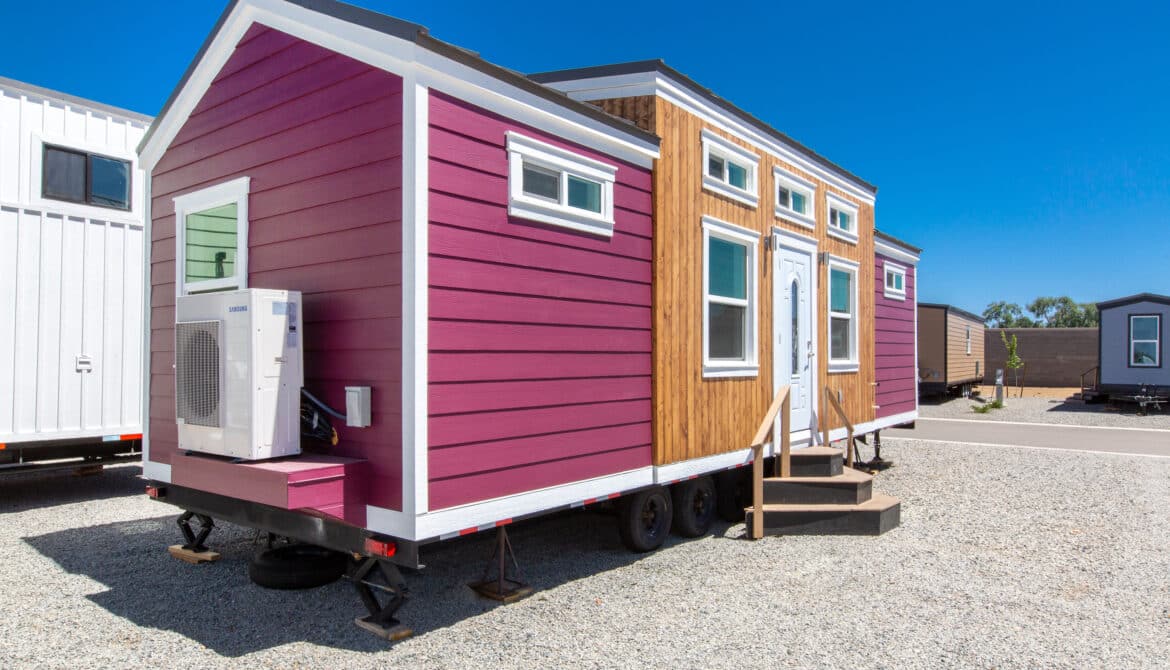Table of Contents
When it comes to building a new home, there are a lot of important decisions that must be made. From deciding whether to have a mobile or stationary home, to choosing the architectural style, to making sure all the legal considerations are taken into account, there is a lot of work involved in the process. It is important to have an understanding of the different options available before deciding on which route to take. This guide aims to provide an overview of the various aspects of building a new home and how they all come together.
The first section will discuss whether it is better to go with a mobile or stationary home. The second section will cover what type of architectural style would best suit your needs. The third section will look at plans and photos that may help you decide on your design choices. The fourth section will cover any legal considerations that should be taken into account when constructing a new home. Finally, the fifth section will discuss working with a professional designer and how this can help make the process easier.
By looking at each aspect of building a new home in detail, this guide hopes to provide some insight into the process and help you make informed decisions when it comes time to build your dream house.
Overview of building a new home: mobile vs. stationary, architectural style, plans & photos, legal considerations, working with a designer.
Mobile or Stationary?
When it comes to choosing a home, the decision between mobile or stationary homes can be difficult. Mobile homes are typically less expensive and easier to maintain, while stationary homes often provide more stability and room for customization. Ultimately, the choice should be based on personal preference and lifestyle.
Pros of Mobile Homes
Mobile homes have several advantages that make them desirable for many homeowners. They are typically much less expensive than traditional, stationary homes. This makes them ideal for people who want to own their own home but don’t have the budget for a more expensive option. Additionally, mobile homes are often easier to maintain than traditional homes since they don’t require as much upkeep or repair work.
Another benefit of mobile homes is that they can be moved from place to place if needed. This can be useful for people who need to move frequently due to their job or other circumstances. It also gives homeowners the flexibility to change their location without having to sell their home and buy another one in a different area.
Cons of Mobile Homes
While mobile homes have several advantages, there are some drawbacks as well. mobile homes tend to depreciate in value over time, which can make it difficult to recoup your investment if you decide to sell in the future. Additionally, they may not appreciate in value like traditional homes do, so you may not get as much return on your investment when it comes time to sell.

Mobile homes also tend to be smaller than traditional houses, which can limit the amount of space available for living and storage purposes. Finally, mobile homes may not offer as much customization potential as stationary ones do since they must conform to certain size restrictions when being moved from place to place.
Architectural Style of Choice
When selecting an architectural style for a home, it is important to consider the environment and climate in which the home will be built. Choosing a style that is appropriate for the area will ensure that the home is comfortable and efficient. Additionally, personal taste should be taken into account when selecting a style. There are many different styles to choose from, so it can be helpful to research the options before making a decision.
Modern
Modern architecture is characterized by its minimalistic aesthetic and use of modern materials such as steel, glass, and concrete. Homes designed in this style often feature large windows that allow natural light to flood the interior spaces. This type of architecture is often associated with open floor plans that create a sense of spaciousness. Additionally, modern design typically emphasizes energy efficiency by utilizing passive solar techniques such as proper orientation and shading.
Contemporary
Contemporary architecture has become increasingly popular in recent years due to its ability to blend traditional elements with modern features. This style typically utilizes clean lines and simple shapes while incorporating natural materials such as wood and stone. contemporary homes also tend to have large windows that provide plenty of natural light and views of the outdoors. Additionally, contemporary homes often feature energy efficient features such as insulated walls and roofs, double-pane windows, and efficient heating systems.
Traditional
Traditional architecture has been around for centuries and continues to be popular today due to its timeless appeal. This type of design typically incorporates classic elements such as gables, dormers, columns, shutters, and balustrades. Traditional homes also tend to feature symmetrical designs with well-defined spaces inside the house. Additionally, traditional designs are usually designed with energy efficiency in mind by utilizing insulation techniques and efficient heating systems.
Rustic
Rustic architecture is becoming increasingly popular due to its cozy feel and unique charm. homes designed in this style often incorporate natural materials such as wood, stone, brick, or stucco into their construction. Rustic houses also tend to feature low-pitched roofs with wide overhangs that provide shade during hot summer months. Additionally, rustic homes typically feature lots of windows that allow plenty of natural light into the interior spaces while providing beautiful views of the surrounding landscape.
Homes in different architectural styles should be chosen based on environment, climate, and personal taste. Modern, contemporary, traditional, and rustic styles all have unique features and advantages.
Plans and Photos
Once you have made your decision on the size of your home, whether it will be mobile or stationary, and the architectural style you wish to pursue, it is time to start looking at plans and photos. This is an important step in the process as it will give you a clear idea of what your finished product may look like.
Finding Plans
When looking for plans, there are several resources available. You can purchase pre-made plans from companies that specialize in this type of service. These plans are usually designed by professional architects and come with detailed instructions on how to build the home. You can also find free plans online or in magazines. If you choose to use a free plan, make sure to check that all of the measurements are accurate before beginning construction.
Building From Scratch
If you choose to design your own home from scratch, there are many resources available. You can hire an architect or designer to assist in creating a custom plan for you. This option often requires more money upfront but may save time and money in the long run as they know how to create efficient designs that meet building codes and other regulations. Alternatively, if you have some experience with design software such as AutoCAD or SketchUp, you can create your own plans from scratch using these tools.
Viewing Photos
Once you have settled on a plan for your home, it is helpful to view photos of similar homes that have been built using the same plan. This will give you an idea of what materials and finishes work best together and how certain features should be incorporated into your design. Many websites offer galleries of photos taken by homeowners who have built their own homes using specific plans or designs. Additionally, visiting model homes in person can be very beneficial as it allows you to see firsthand how certain features look when put together in real life settings.
By taking the time to view plans and photos prior to beginning construction, you can ensure that your home turns out exactly as envisioned while avoiding costly mistakes along the way.
Legal Considerations
When building a home, there are many legal considerations that must be taken into account. The most important of these is obtaining the necessary permits from local and state governments. Depending on the location of the property, there may be zoning regulations that restrict what types of structures can be built in certain areas. Additionally, any changes to existing structures or construction of new ones may require approval from the city or county.
It is also important to understand any potential liabilities associated with building a home. Homeowners should consider their liability for injuries sustained by workers or visitors to their property while construction is taking place. They may also need to purchase additional insurance coverage if they plan on renting out the property once it is completed.
Finally, homeowners should be aware of any applicable building codes that must be followed when constructing a home. These codes can vary from state to state and even between cities within a state. Building codes typically cover topics such as structural integrity, energy efficiency, fire safety, and other aspects of construction that are designed to protect public health and safety.
Permits
Obtaining the necessary permits from local and state governments is essential when constructing a home. Depending on the location of the property, there may be zoning regulations that restrict what types of structures can be built in certain areas. Additionally, any changes to existing structures or construction of new ones may require approval from the city or county before beginning work.
Liability
Homeowners should consider their liability for injuries sustained by workers or visitors to their property while construction is taking place. They may also need to purchase additional insurance coverage if they plan on renting out the property once it is completed.
Building Codes
Finally, homeowners should be aware of any applicable building codes that must be followed when constructing a home. These codes can vary from state to state and even between cities within a state. Building codes typically cover topics such as structural integrity, energy efficiency, fire safety, and other aspects of construction that are designed to protect public health and safety.
Working with a Professional Designer
When it comes to designing your dream home, it’s important to consider working with a professional designer. A professional designer can help you make the best decisions for your home and ensure that your vision is realized in the most efficient way possible. Working with a professional designer can also help save time and money by avoiding costly mistakes.
Choosing a Designer
The first step when selecting a designer is to research their portfolio and reviews from former clients. It’s important to choose someone who has experience in the type of design you are looking for and who has a track record of successful projects. You should also consider whether the designer is willing to work within your budget and timeline.
Communication
Once you have chosen a designer, it’s important to establish clear lines of communication. Make sure that you communicate your goals, budget, timeline, and any other expectations clearly at the beginning of the project so that there are no misunderstandings later on. It’s also important to keep in touch throughout the project so that any changes or issues can be addressed quickly.
Final Product
At the end of the project, make sure that you are satisfied with the final product before signing off on it. If there are any issues or changes you would like to make, make sure they are addressed before signing off on the project. Working with a professional designer can help ensure that your dream home is realized in an efficient and cost-effective manner.


